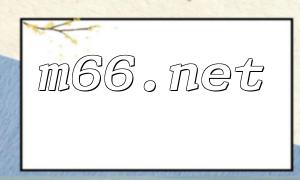In today's internet age, the deployment and publication of Web services has become an essential topic. PHP, as a widely used server-side programming language, combined with the SOAP (Simple Object Access Protocol) protocol, enables efficient communication between different applications. This article will explain how to deploy and publish Web services using PHP and SOAP, with concrete code examples to help you understand the process.
Before getting started, you need to ensure that the following conditions are met:
Next, you'll need to write PHP code to implement a SOAP Web service.
First, create a new PHP file (for example, web_service.php). In this file, you need to include the SOAP-related extension libraries:
<?php
ini_set("soap.wsdl_cache_enabled", "0");
require_once('lib/nusoap.php');
?>
Next, create a SOAP server object:
$soap_server = new soap_server();
Define the namespace and service name for your service:
$namespace = "http://localhost/my_web_service"; $service = "my_web_service";
Write a simple "hello_world" method that takes a name and returns a greeting:
function hello_world($name) {
return "Hello, " . $name;
}
Register this method with the SOAP server:
$soap_server->register(
"hello_world",
array("name" => "xsd:string"),
array("return" => "xsd:string"),
$namespace,
$service
);
Finally, start the SOAP server to listen for requests:
$soap_server->service(file_get_contents("php://input"));
After writing the Web service code, you need to upload the PHP file to the appropriate directory on your Web server (e.g., /var/www/html/). You can then visit the Web service URL in a browser (e.g., http://localhost/web_service.php). If everything is set up correctly, you should see a SOAP service description (WSDL) page.
Now, let's call the Web service from another PHP file using a SOAP client.
ini_set("soap.wsdl_cache_enabled", "0");
require_once('lib/nusoap.php');
Create a SOAP client object to access the Web service:
$soap_client = new nusoap_client("http://localhost/web_service.php?wsdl", 'wsdl');
Call the "hello_world" method using the SOAP client and pass parameters:
$result = $soap_client->call("hello_world", array("name" => "Alice"));
echo $result; // Output "Hello, Alice"
This article explained how to deploy and publish Web services using PHP and SOAP. By creating a SOAP server and adding methods, we can convert PHP code into Web services that other applications can call. With a SOAP client, we can easily call these services and get the results. SOAP provides a standardized communication method between different platforms and programming languages, making it a powerful tool for building Web services.









